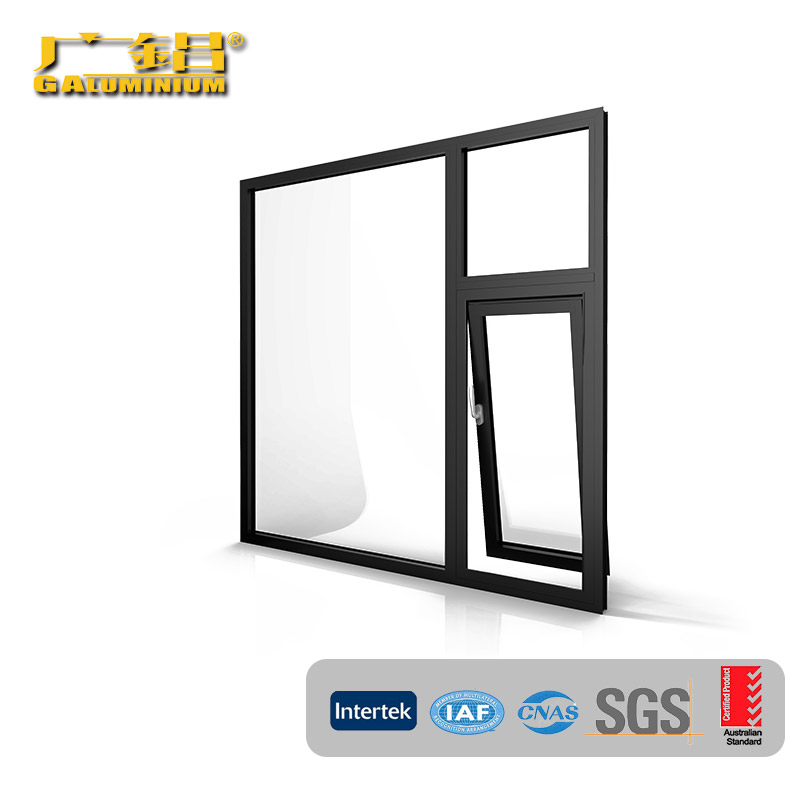Installing Gray Aluminum Outside-Hung Windows: How They Compare to Other Window Types
2024-05-16
When it comes to window installations, the choice of material and style can significantly influence the process. Gray aluminum outside-hung windows are increasingly popular due to their sleek design and durability, but how does their installation compare to other common window types like wood, vinyl, and casement windows? Let's explore the differences and similarities in the installation processes and the factors to consider for each type.
Understanding the Installation Process
General Steps for Window Installation:
1. Preparation:
- Remove the old window, if replacing one.
- Clean and prepare the window opening.
- Check for any structural damage or rot around the opening and repair as needed.
2. Fitting the Window:
- Place the new window into the opening.
- Ensure it is level, plumb, and square.
- Secure the window in place with screws or nails.
3. Sealing and Insulating:
- Apply sealant around the edges to prevent air and water infiltration.
- Insulate around the window frame for improved energy efficiency.
4. Finishing Touches:
- Install interior and exterior trim.
- Clean the window and inspect for proper operation.
Installing Gray Aluminum Outside-Hung Windows
Step-by-Step Comparison:
1. Preparation:
- Similarity: The preparation for installing gray aluminum outside-hung windows is similar to other types. The old window is removed, and the opening is cleaned and inspected.
- Difference: Aluminum frames are generally lighter than wood, making them easier to handle during removal and preparation.
2. Fitting the Window:
- Gray Aluminum: These windows often come pre-assembled, making the fitting process straightforward. Their lightweight nature simplifies positioning in the opening.
- Wood Windows: Heavier and may require additional support during installation. Wood frames can swell or shrink, requiring precise adjustments.
- Vinyl Windows: Similar to aluminum in weight and ease of handling, but vinyl can be more flexible, requiring careful alignment to ensure a snug fit.
- Casement Windows: Depending on the material, casement windows may involve more complex hardware for the opening mechanism, requiring additional steps during installation.
3. Sealing and Insulating:
- Gray Aluminum: Aluminum frames must be insulated properly to offset their conductive properties. High-quality sealants are used to prevent drafts and water leakage.
- Wood Windows: Require meticulous sealing to prevent rot and maintain energy efficiency. Wood frames are more susceptible to weather damage without proper sealing.
- Vinyl Windows: Easier to seal due to the material’s inherent weather-resistant properties. Insulation is straightforward, similar to aluminum.
- Casement Windows: Sealing around the opening mechanism can be tricky. Extra attention is needed to ensure the crank and hinges are properly sealed.
4. Finishing Touches:
- Gray Aluminum: Typically involves fewer finishing touches since the frames are often pre-finished. Minimal painting or staining required.
- Wood Windows: Usually require painting or staining after installation to protect the wood and match interior decor.
- Vinyl Windows: Usually come in a range of colors and finishes that don’t require additional work post-installation.
- Casement Windows: Depending on the material, may need extra finishing around the hardware.
Conclusion
Installing gray aluminum outside-hung windows is a relatively straightforward process, thanks to their lightweight and pre-finished nature. Compared to wood and vinyl windows, aluminum offers a modern aesthetic with minimal maintenance. However, ensuring proper insulation and sealing is crucial due to aluminum’s conductive properties. Each window type has its unique installation nuances, making it essential to choose the right window for your specific needs and preferences. Whether prioritizing durability, aesthetics, or energy efficiency, understanding the installation differences can help make an informed decision for your building project.



